August 3 - 9, 2014: Issue 174
Takashi Tachibana
Our Artist of the Month for August brings ancient traditions and modern insights into diagrams that compliment and illustrate his work as a medical practitioner and former acupuncturist and its working. As with all our Artists we wonder where the particular voice and creations of this individual come from, not only to celebrate and honour that person, but also to glimmer some of the paths, or maps and map, that have brought them to where they are now. This is a little of Mr. Tachibana's unique and articulate song:
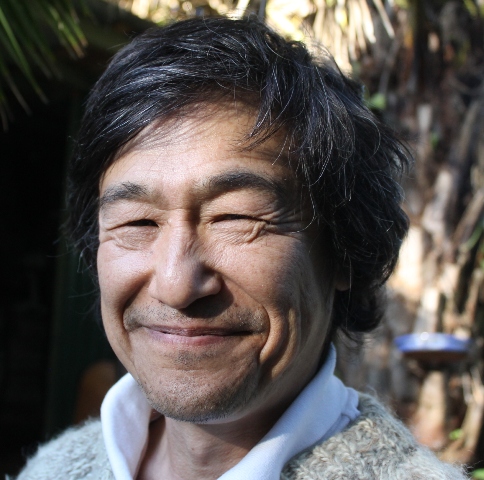 When and where were you born?
When and where were you born?
Tokyo, 12th of June, 1958, in the morning.
Did you grow up in Tokyo?
No. I came to Australia before I was one. My father was a wool buyer working for a big trading company, Kanematsu Gosho. He was among the second lot of Japanese wool buyers to come back into Australia after World War II, in 1954. Ours was an executive family. We lived in Melbourne to start off with and were there for three years. We went back to Japan when I was four and came back out to Australia five years after that when I was nine. So I’ve only spent six years in Japan – from just after I was born and then when we went back. While in Japan we moved twice. This was when my father was working in South Africa – I lived with my mother’s family for around a year and the next four years in a place called Minoura - which is between Osaka and Kyoto.
Do you retain any memories of that time?
Oh yes, I was nine when I left Japan. I recall primary school and that there were still rice paddies around the house there. It wasn’t rural but at the edge of the city. People were commuting to Osaka from there using the train line. There were frogs in the paddies; I used to ride a bike up to the local temple to get acorns and insects. With the acorns you could put a toothpick in them and make a spinning top.
I think I spent a fair bit of time on my own – it was a modern urban, middle class executive life in Japan but always with our expat place in mind.
I have been back there and it’s all built up now. No rice paddies at all.
The second time we came back to Australia we went to Melbourne again and were there for five years until I was fourteen.
That must have been a bit of a culture shock?
In some ways. I didn’t speak any English. The first time I was in Australia I was speaking mostly English and not much Japanese. But while I was in Japan I lost all English except ‘wild boar’ – I don’t know why but I retained ‘wild boar’.
I had intensive private lessons a few times each week before starting school at the beginning of third term of 4th grade. I went to a private boy’s school called Brighton Grammar, in Brighton. There was still the traditional Anglo-Saxon Australia in place there, it was much less cosmopolitan than Sydney. Melbourne is very settled and that was good as I could join a settled community and could assimilate as a Japanese.
There weren’t any other Asians in the school at all.
Did you have difficulties with your friends at school with being Japanese?
I don’t think so. I had nicknames but nothing awkward or difficult. It was certainly a very well supervised school – there was still the cane but even that wasn’t very overt. I didn’t see any of it. I was only ever involved in one fight – it was very rare to see any fighting going on at that school.
I was in Sydney for Year 11. I remember us driving up the Pacific Highway and driving through Newtown. We ended up in St Ives, where my parents still are. I attended Knox Grammar School for Year 11 and 12.
You then went to Sydney University?
Yes. I wanted to study either Music or Medicine and chose Medicine.
While you were studying there was a hang gliding incident, wasn’t there?
Yes. At the end of the second year – and is probably the lowest point in my career. I hadn’t heard how many exams I’d failed – I was searching – and this probably had a lot to do with breaking my leg. Before I had the results I’d left Sydney with a friend who had a car and we’d gone to Port Macquarie where I broke my leg hang gliding; I got caught in what is called a ‘rotor’ apparently. I was concussed fairly seriously and subsequently don’t remember flying or waking up – I do have vague memories of having breakfast at the campsite.
I sustained a broken left thigh, broken in two places, which was called a ‘butterfly fracture’ because there’s triangular bit between the two breaks, like a butterfly wing.
I vaguely remember waking up, having been pre-medicated, just before the operation, but otherwise, nothing of that day.
I did make the local newspaper; “Medical Student Diagnoses His Own Injury” – so I must have been awake and talking, and asking or answering at least some questions – it’s quoted that I asked if it’s a compound fracture, which means that the bone has broken the skin – which it hadn’t.
It was a fracture that could have been treated with plaster conservatively – but I guess the standard thing would have been to operate and perhaps they were worried about internal bleeding – but there was no consent given except by the friend who accompanied me. The left leg story is an important part of my life because there were complications from that operation. I had to have three more operations; two more to try and straighten and fix the first – the leg was not fusing, not mending after the first operation and was re-operated on twice. Each time it was re-broken and marrow from the hip was used to promote bony growth.
I had this occurring through the rest of my medical studies. Looking back, I think it did affected my functioning. I’m still recovering, in some ways.
You did graduate though?
Yes, I did graduate and did my internship at St Vincent’s before being in private practice. Once I finished my internship I took a sabbatical for most of a year. I’d been practicing yoga and studying Chinese Medicine and then went to China for about five months, mainly to wrap up my studies in acupuncture.
On the way back I had an opportunity to stay in a Zen temple, and these were important experiences.
In the Zen temple, as is practice, you are invited to join in the meditation. The head priest, who was 88, had an interesting illness and had been bedridden for some time, perhaps six months. I had the honour of treating him – it was a bit of a strange illness, it didn’t fit into western categories of disease, eruptions on the surface of the skin affecting one half of the body. I could relate to it, energetically, if you like. I treated him with acupuncture several times and he recovered enough to get up, to sit up, and do some calligraphy to give me. They came to be the last three pieces. He was virtually blind - his wife had to sit beside him and place his hand and brush to the starting point. He must have been able to see a blurred image of the white paper, but I don’t think he saw what he actually wrote.
Why was his disease manifesting on only one side of his body – was it his right or left side?
I can’t quite remember now. But he taught me what to heal or where it is to.
What did you learn at the Zen temple?
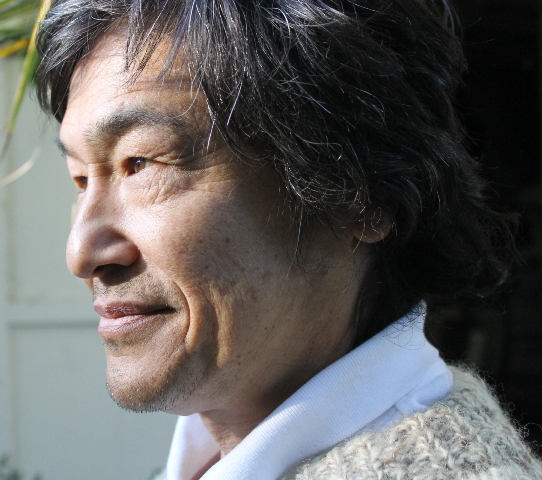 A few things. At that time it was a very open to the West temple. The Elder’s son – in Japan the position is passed on through the family – was drunk and slept on the street and was run over. So the second son was called back from San Francisco where he’d been introducing Zen Shiatsu - and it was through that connection that I came to be at the temple. He wasn’t there at that time, but his wife, who was a New York Jewess, was running that side of the temple, and the old priest was overseeing the sessions and leading the ceremonies.
A few things. At that time it was a very open to the West temple. The Elder’s son – in Japan the position is passed on through the family – was drunk and slept on the street and was run over. So the second son was called back from San Francisco where he’d been introducing Zen Shiatsu - and it was through that connection that I came to be at the temple. He wasn’t there at that time, but his wife, who was a New York Jewess, was running that side of the temple, and the old priest was overseeing the sessions and leading the ceremonies.
The running of the place was by an interesting monk. His name was Dai Do, Large Path – he had graduated from the Eiheiji Monk Training monastery in the quickest time of it’s 800 year old history. He had been a karate teacher to the police force in Kyushu and was a fairly serious bloke.
During most of the time I got to spend there, there were regular meditation sessions. Towards the end, I asked him if there was anything I should know or pursue and he did that thing of pushing me back on to myself – encouraged me on my own way. It was something I was told, Dai Do said – I don’t know that I learnt from it, as such.
Japan is a very spiritual place – there’s Shinto and Buddhism, people who have been practicing a traditional way for a long time, despite its modernity and modernisation. There’s a lineage that is soaked into the land.
While still at the Zen temple I spent time in the local Shinto shrine as well, taking in the energy and atmosphere. I remember there were two huge Spruce trees either side of a path and rocks – I spent a lot of evenings standing between them. It was about connecting with a place.
That was at the beginning – and they (Dai Do’s) were kind words, looking back.
Did you return to Australia after that?
Yes – this was the late 1980’s. I set up a private practice in Gordon. My idea was to practice medicine and complement it with acupuncture – to practice Western Medicine complemented by Eastern Medicine, but I found the demand was mainly for acupuncture.
I went with that – there was enough service, especially in the city, being offered. I pursued health and well-being, and practiced to promote health and not just treat the disease but involve the whole person. It was a particular time, New Age was becoming mainstream.
Did you find your skills and self evolving the more you did this?
Very much so. Acupuncture is ancient and Daosit. It’s different to the inductive, determining, then ‘crack open’ the causal component determinism. It leaves the black box intact and this makes sense from the point of view that you’re wanting to involve your self in life whereas if you chop it up, you might be able to determine what that heart is or what the brain is, but in terms of its functioning as a part of the whole, you’re looking at disassociated bits.
It’s only in the mind that you can divide the body up into its systems – cardiovascular, respiratory - and only in the mind we can be disassociated to consider what reality is, or our part in it, if any. It is a profound thing to consider what to do as a part of a whole being. And of course, to intervene or involve for others.
My realisations began when I was about 14 with “I don’t know what I want”. I think that was an important place – it was not just an acknowledgement of alienation but to me “I don’t know” is a truth that humanity tries to leap across, to hold on to what we can determine or know, and gain or further establish from there.
I think what the monk Dai Do said, in terms of pushing me back on to my self, is towards the truth or mystery of un-knowing. The Christian mystics talk about meeting God through ‘The cloud of Unknowing’, and the Zen tradition has Emptiness and Nothingness and I take pride in discriminating between the two; Emptiness is the disassociation through which we’re having an experience and Nothingness is the absence of the solid body ‘who is there’ – this has come about through my work.
My private practice has been an organic and integral part of my life and my growth. I think helping others, as well as growing and developing, can be a mutual thing in a healing practice. It’s like the teacher and the student, where the teacher learns in teaching as well as the student.
Through my private and clinical practice, I have come to relate with the whole being of whom I am a projected part, an actuality our self and our world in projection. I am developing in that relation.
Look, I’ll try to explain how orientation has come to me or “how it worked out for me and I worked it out” - to capture our self and our reality in space as projected actuality, including our witness, and relate with the whole body, his or her structure, but also in whole being substance and meaning in his or her being and in whole self stature and substance - stands for something, is someone, whole self. We occupy projected space, as project-ees of.
As I began my practice in Gordon, I thought of looking through some of my textbooks. I did not agree with using set acupuncture formulas but responded to the situation in the person, the season, how I was as well – in my needling I was traditional. Perhaps this has its basis in treating the priest who had the one-sided condition, my acupuncture, the placing of my needles, was asymmetric right from the beginning. I was noticing more of what was happening as I practiced and counselled, and they my work and growth were reinforcing one another. I was conscious of my part, but was careful not to reduce my part to a detached self and free agent or to a particular formula or practice.
That time I thought about studying the textbooks, I realised that I could not know where to start really. I was learning a lot through my practice, and have already mentioned the ‘unknowing’ beyond our knowing, and yet I wanted to know more. If I was to decide where to start – I’d be limited, in terms of my initiating a particular process, when things were unravelling or revealing and I was beginning to understand my part.
We either reach out beyond our selves or we hold on to our deeper selves. We flip between the two of asking someone, or reaching out to God, or seeking in Nature what to do next or how to be, or we try to dive deep and try to find something there or hold on to our deepest being there – and both are limited by the self that does those things. It seems we as identity or self on our own, has no other choice other than to reach out beyond or hold on to our self.
However, and this is a while later, I realised that there is a whole body in and of reality, of whom we, and our outsides and insides, are parts.
At that time I realised I don’t know where to start, but I was conscious that I was learning already. Then, my epiphany was – I remember looking out through the window, which had a view across the valley, and saw the book of Life opening before me…the intuitive part of me saw this… I’ll try to explain. I tell this story of throwing a spear, hitting a target and getting dinner. We could be in wonderment and awe about our part in a functioning body and his or her being in reality. But everyone runs up and praises you for getting dinner. No one else did it, so it must be you - but it’s the whole body that actually does it, and it’s the whole body that actually does our thinking, and we just get a snippet of it. You might stop and think ‘where did that come from?’ or ‘how did I work that out?’ – well, we didn’t. We as an identity only get the ‘ding!’ at the end. We cannot see our self-s as an identity or an actuality, certainly not the witness by which we witness our self and what we experience. With only talking heads out there that engage with you or turn away from and no definite sense of a whole being in reality, we conclude “I’m it”.
So you think you visualised an archetype that you could recognise and understand?
I didn’t visualise the archetype as such – there was an archetype beyond me by which a vision was formed that I saw. It was a vision of a big fat book that was open and floating above the horizon over the valley. I could see the spine because it was like looking at it from the top – and this is my way, and perhaps it’s an Eastern way - rather than trying to determine ‘what it is’ and grasp it, and this is what I understand now, I related to the situation, the actuality of my self and what I was experiencing.
Like remembering a dream, the memory or sense of it disappears in a puff if you come at it too cognitively or knowingly. It’s not about getting something, or even getting to something, it’s about being a part and relating to or being in relation with reality – that is there already and always happening, and is actually a ‘who’ rather than ‘that’ or ‘ít’ - we’re the projected part of a whole self being a who, he or she.
Every other thing, apart from the whole body being whole self in reality, can only manifest within what the whole body projects for us in our reality, as an indication, an experience.
Internal or external, our outside and inside worlds are where what we experience are. The worlds and what we experience of our self, others and our worlds, may be functional and indicate who or what is there in reality.
And our reality is witnessed. Our self and what we experience, we identify subject as self against object or what we experience and identify with, of its self being our experience.
So when we go determining in that, we’re further isolated from the whole body; in identifying with what we experience, we distance our selves from the whole body who projects both our self-s as subject and what we experience as object.
So what I did, and perhaps it’s humbleness, in face of the whole self perhaps, I’m not sure, was acknowledge that and to leave it for that. My reality as is, actuality witnessed, me and my experience witnessed. All is experience, nothing is taken away, but the connection to reality as part belong to the whole self.
So, it’s like there may be a crown jewel, and secret geometry may be in its structure, but instead of delving into that, you let that be and relate further to the greater reality of you and that treasure, sacred or not; whether it be knowledge or something precious in other ways; similar to referring that crown jewel back to the nation it may spring from.
Everything is only a part – there is actuality, created and placed or projected by the whole body in reality who is also a whole being and your whole self, from his or her central nervous system.
So instead of examining a small part that manifests from the metaphysical you’re stepping back to see where it fits in, to the whole?
Yes. In trying you realise that you are another isolated part – so somewhere along the line you want to go on to, and this is how I express it now, you hope you come on to the wholesome side of your/you’re trying. Your here and now - it is about actuality, beyond the “what’s what” of our reality of experience and beyond that it is witnessed, and then reality, being a whole being of whom our reality is created and placed or projected and our part.
After that experience at Gordon, and allowing that to simply settle and develop – what happened then?
I continued with the acupuncture and counselling for the following seven or eight years. I learnt and discovered more about acupuncture - there is originality in any person’s practice or work that could contribute to their field.
I pursued the way that I suppose is involvement. What I came up with is a recognition of our reality, of the human condition, as projection, as entities or projected actualities in projected space. The chronology of it is lost to me; but it’s there in my notes. If you would go through them to work out such, please!
Basically it is an orientation in space; and you can orientate in space because we are a projected actuality or entity. So our self, and what we experience, are both projected by the whole body.
The confusion is that what we experience seems separate and objective of us, and indeed it is, but it is the whole body who projects our sense of connection as well as separation from the object of our experience. The fact that our experience consists of outside and inside experiences means that it is not real - in the sense that there is only one reality.
Outside and inside splits between us as an identity.
In this, for the sake of our further conversation, I try to establish a discrimination between self and whole self, our projected reality and reality. The whole body is in reality – we and all we experience are a projected part of our whole, who is a whole being, whole self, and is actually a whole body in reality.
Having experienced these exercises – there seems to be a re-connection with whole spirit, which resides in the spine; and part of that experience was to discern an unfolding of the different parts of the body metaphysically – the liver; the heart; and where these connect to that spirit as well as the physical organs themselves. This reminds of other cultures that recognise a spirit energy in the spine or core; aboriginal culture does this; so do Sufi dancers in turning around their spine, or centre, maps of the body and its dynamic; what benefit does this bring to someone practicing these exercises?
Thank you for describing what happened through our work. It is a difficult thing to describe. Each person has their understanding and a clinical situation must expand these world views if merely to indicate healing, resolution or growth.
People may ask ‘what do you mean’ without one…(a description)...
Well, I hope that those questions do arise. There are different cultures, as you have touched on a few. In the Western tradition too there is science that reduces it to determinable components, and yet we’ve come to where we understand the limits of the types of knowledge we deal with, which is determinable knowledge, and it’s limited by our senses and what we can sense. Science and philosophy have become the same as they get closer and more accurate.
So it’s actually the world of phenomena. It’s an interesting step in Western philosophy where this bloke Kant talks about the phenomena, which is what appears to the senses, and through the classics there’s been a bit of an issue over whether there is a more fundamental reality than phenomena. Plato used to argue for the more fundamental; the forms and ideas which were universals. There is a term called ‘the noumenon’ – the noumenal basis to phenomenon – Kant said the noumenon may exist, but you can’t know it, so don’t worry about it. We think about it because we do worry, and we think so we don’t have to worry.
Science took this a bit further by saying ‘if you can’t measure it, it doesn’t exist’ – which is useful as we discovered the world and the independence of the identity and its ability to manipulate the world. But we’ve done all that, and ten times over, both creating and destroying the world; housing, feeding, reproducing – but we don’t know how to stop. That is the problem now.
The European tradition recognised a connection between organs and emotions, for example – that is in our English language; ‘feeling liver-ed’
Or ‘tempremens’ – which was also related to defining weather originally too…
The organs are mentioned – spleen is referred to in terms of bileness – ‘he’s full of bile’...
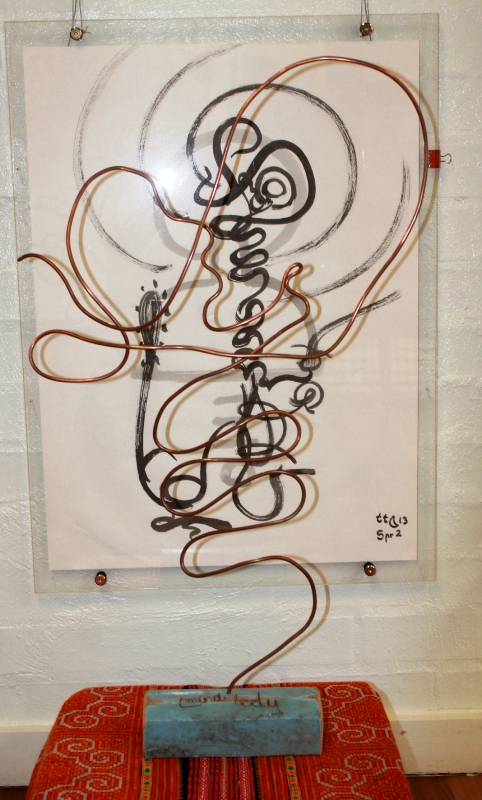 As part of your work there were notes, and diagrams that incorporated a seasonal progress which is part of how and why people are affected. How do these diagrams help people understand better how they are affected or connected to this too – for instance, here we are in mid-winter again and the same conditions arise as part of these cycles – and how this unfolds too – appears in these drawings.
As part of your work there were notes, and diagrams that incorporated a seasonal progress which is part of how and why people are affected. How do these diagrams help people understand better how they are affected or connected to this too – for instance, here we are in mid-winter again and the same conditions arise as part of these cycles – and how this unfolds too – appears in these drawings.
There’s development that occurs lineally, perennially if you like, but a big part of reality is fluctuant in a cyclic and seasonal way. And this is something that I’ve come to appreciate through my clinical and personal practice by recognising our projected actuality. I don’t like to use the word ‘energy’ as it is used in many ways and contexts – even ‘projection’ is a term that has already been used in psychology.
So, ours is and we are of created and placed or projected actuality, projected by the whole body from the brain-spine. From the brain-spine suggest the mechanism of how the whole body projects our reality, but it’s only in our mind that we can chop the whole body from the central nervous system. There is no central nervous system that is functioning without the whole body and there is no whole body without the central nervous system.
So it is the whole body that creates our reality and the main organ for it is the central nervous system.
But yes, it goes through this seasonal fluctuation, and that is something that is hard to introduce to people. It needs to be done over time. In fact we are fluctuating all the time.
There are also classical references to this though – in the I Ching and represented in classical literature that portrays archetypes that relate to the organs of the body and what they are doing at specific times of the year…
That’s right. Coming back to your previous question about other cultures and their knowledge and what is the benefit of doing that exercise – there are always two aspects; being and doing – and ‘what are we’ and ‘what do we do’ – and ‘what is it’ and ‘what is happening’ – these are similar things. Experiences are very private until you put words to them and communicate it; it is through the unknowing that it’s possible to have a direct or deeper sense of one another.
This occurs when we communicate and feel that we have communication, a common sense of understanding. We’re often ahead of the sentence finishing, nodding before the statement is made. That could just be a feeling, rather than an understanding, but there is a sense of knowing each other – it’s the stuff of human contact.
And there are deeper levels as well. We can have an intuitive or distant sense of someone looking, or someone far away. They may be indications of what or who are in reality or of our internal processing, perhaps and indeed we are perplexed when it seems there is no purpose in what we experience.
Beyond having an experience, there is our actuality. Projection allows us to consider our whole. Beyond our experience and the actuality of the self having an experience, and witness, by which (“whom” is for the whole person or self) we are aware of what the witness witnesses, is the whole self. We may relate as a projected part, with our whole. We can relate with who is beyond our self, as a part.
If we had a life that is truly rich we could exercise our lives in telepathy for example, or teleportation as you deal with a sense of someone’s presence, and take it with you to relate with the whole body present in the present, alive in creation, solid on Earth, of matter in and of gravity, space and time, in reality.
I’m suggesting whatever your skill and experience, beyond your self is the whole self.
These are things that again, just like the Book of Knowledge or Life, I don’t want to try to determine, because you just get into an argument of ‘true or false’, right or wrong, good or bad – those ways of cognitive determining is circular. The phenomenologists call it judging and say to suspend. The self as is, but the self as an actuality, the self that is, is an actuality created and placed or projected by a whole being of whom we, you or I, as an identity and self are linguistic and sensory.
You see, our cognition or knowing, it works through contrast; there’s no father without a mother, or daughter or son; there’s no right without wrong – so the moment you say ‘this’ you’re limiting actuality to what you determine, in contrast.
In the first place, you’re determining what you sense; there’s the actuality of you and your experience. This profundity of subject and object, the dichotomy of our reality, is further witnessed, a trichotomy. And there is a deeper being and sense.
In cognition we work through contrasts. Emotionally and deeper, it’s through conflict – you and your reality in anger conflicts with when sad or happy or in fear. Then deeper again is your somatic being and sense that are contradicting - what you see is contradictory in being of different sense to what you hear, what you touch is contradictory to what you taste. So these are bits contrasting, conflicting and contradictory, that make-up our reality, projected actualities that includes the witness. When you determine in that, it can only be in compromise, inauthentic to our whole and of our self being a projected part of our whole. We are dammed in being of the human condition. Our identity, we as ‘it’, can only be a projected part. In identifying with what we are, a projected part, and considering our whole, is our only way. We are validated, only by our whole.
Some, after doing these exercises, state if they have a crick in their neck it’s gone; others with a sense of feeling blocked feel unblocked…
Yes; that is the positiveness of healing.
That positiveness is something that is in contrast to negativeness, which is illness or discomfort – and I feel it (healing) occurs as we become more integrated with our whole. But healing is only a part of what’s going on.
The process of becoming what we are, is the way in all ways and actuality. There is only the whole self and he or she is a whole body and whole being. Healing, resting, recovering, correcting, growing, actualising and realising, in both self and whole self. In becoming a part as a projected actuality, and the whole becoming whole, authentic. It is the whole body who can be in peace and in harmony with a true environment, the rest of creation, in reality.
Ideally people should identify with their relation with their whole body in getting sick or getting better. Most people get better, and they say it’s because they took a medicine, or because they rested, or they went and saw a healer, or they had a holiday, or they tried a different diet or they tried sleeping the opposite way or something, perhaps nothing. They’ll say a positive result occurred because of such and such, but the illness itself occurs for an unknown reason, ultimately, beyond our understanding, in reality. There are causative factors but beyond our world views, what triggers an illness is a mystery. As is healing and living in our actuality and the whole body being and changing.
I like to think of it in terms of it’s the whole body that creates an illness, and it’s the whole body that heals us. We identify with just bits of that and say ‘it’s this or that’. Healing is a side-effect, a bit of the thread thrown our end, from the whole body being alive in and of creation.
It’s in our inherited genes to manifest cancer – that kind of thing?
Yes, inherent, it’s all in the genes, but it’s more then a matter of expression. We question, ‘is it the carcinogens in the air?’ but not everybody gets cancer; ‘is it a virus?’ but not everybody is coughing. Through modernity we’ve gone through the nuclear age, we blew up the nucleus the form of causality, of nuclear families and atomic institutionalised and bureaucratised suburban individuals, through linear, multi-factorial, relative, quantum, chaos, to post-modern digitalised units of accountability and transparency, where technology keeps up with the workers who consume what they produce.
Look, we are deep within notion and sense, in our mind with our deeper sense, away from the whole body, sensing at and guessing what it is like and happening, and questioning. Stop your answerings that lead only to more questionings, then from more fundamental sense and being and questions, each time to actuality. We are being bombarded in our senses with technology, mass production and post-modern relationships.
Getting back to creating and keeping a record, and in particular the diagrams that went with those, they are art works in their own right - and you have accepted that they are as you have put on an exhibition ..…
I saw a program on Leonardo Da Vinci yesterday and his notes that are archived, there’s 6000 pages. I don’t know that I’ve got 6000 pages, they’re in boxes, and certainly not archived…so if anyone’s interested….
My notes have always had diagrams with them, and my patient’s notes too; a lot depict the projected shapes that they occupy as projected actuality.
It’s not that I sense people’s minds, their deeper sense of being as well as their experiences that are held in their body. They are the ‘what’s what’ of it, of a person’s reality, and I reduce that to ‘where’ they are, and the where of it, instead of the aware of, is to me much more vital and meaningful because it allows one to introduce the whole body, through where we’re projected.
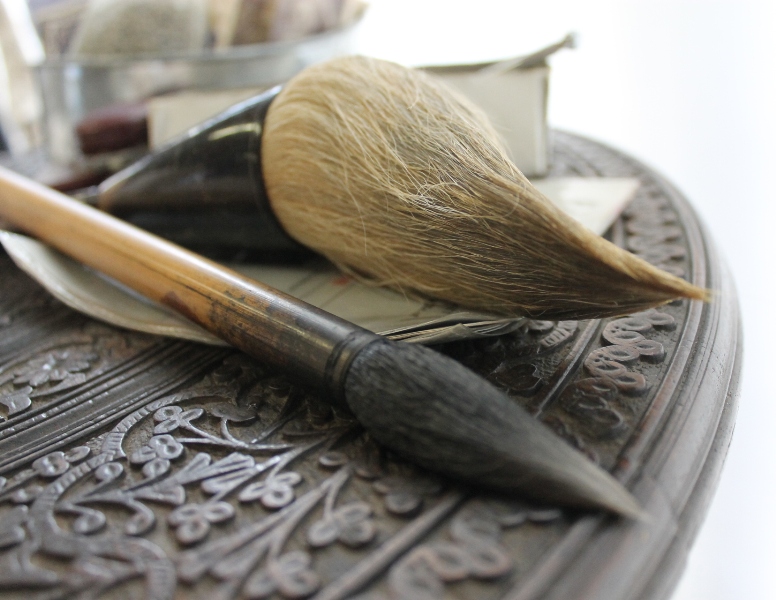
What is the difference between the works we saw at your exhibition and those that form part of your patient notes?
The exhibition diagrams are more general, they’re bigger and are presented better – the idea is not different but publically presented, people can wear those images.
So people could say ‘I like late Summer, - can I have a diagram of that?’ or should people walk into the Exhibition room and discover which part of the cycle appeals to them more?
Other people have suggested presenting my work in three dimensions using computer graphics and I’ve pulled away from that because I don’t want people to identify with the images. I want people to relate to the images only as a basis for recognising their own projected make-up, and from there to relate with the whole body.
So I mention orientation, in space to capture our projected actuality, and then the second half of the process is orientation with the whole body, to relate our projected actuality with the whole body.
It’s easily said, it’s difficult to do, because anything that we do, normally, is in cognition, and although it is a mystery as to how a body does anything, we are spoilt in thinking that we do everything when it is the whole body who actually does – we think all it is is to get over our laziness or our fears or distractions, and then we can do anything. We actually don’t know how we do anything; we stop and think and become conscious of more that is happening. You might be picking your head or something, but when you stop and think, apart from what you think you are doing, ‘how is that finger moving and how did it get to that spot, and what is that itch anyway’ – is it a tick or a pimple.
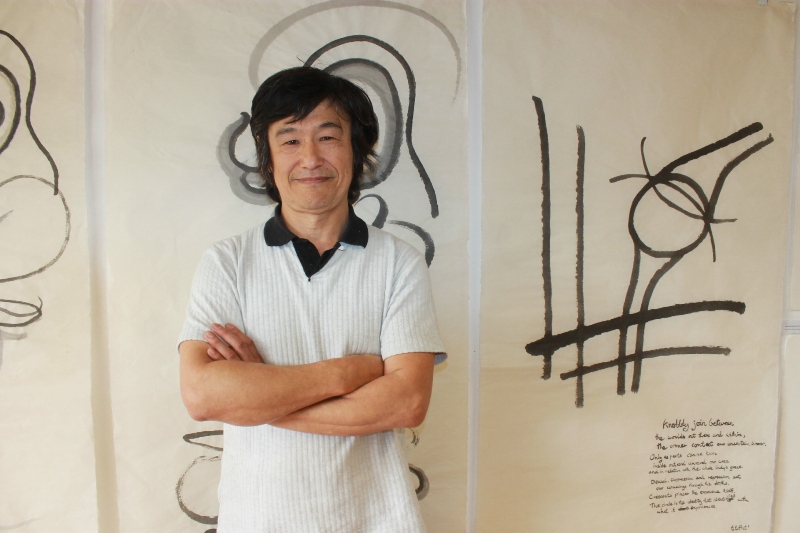
What is your favourite place in Pittwater and why?
The National Park at West Head is always an important place for me. I’ve spent a lot of time out there roaming the bush; there’s a particular rock- my instincts took me to there one time a while ago, and I’ve had experiences in several places but particularly there.
The McCarr’s creek area – there’s beautiful spots around there. But I like my backyard in Avalon.
I used to long for the mountains and the seas and then realised that the seasons come into the bedroom, and soon after that I realised that it is the whole body who is wilderness, not designated wilderness, and not somewhere to get to or something to grasp – the whole body is beyond our self and alive in creation, and touched by the rest of creation. When you start looking for wilderness or the perfect spot, what are you going to do when you get there?
Dwell?
Yes; but dwell in your whole.
You mentioned the whole spirit before when you were talking about other traditions; I call the whole body the ‘whole self’ and ‘whole being’ – also the ‘wholy ghost’ with a ‘w’ because the whole body disappears with the rest of creation.
The Atman is a Hindu reference to Self with a capital ‘S’ and they have this phrase: “Brahman and Atman are one”. In the Hindu tradition there’s subject and object; they recognise the dichotomy, and they spend time with the witness, but in that, the witness that recognises subject and object would make, again, a trichotomy – which is not mentioned, they go from dichotomy to oneness, and the oneness is Brahman and Atman are one, and indeed they are in spirit. My cosmology is this, and comes of orientation: all creation, and within all creation are whole bodies, but in each whole body, at the core, is the essence of all creation and the whole body – so that’s the oneness of all creation and whole body, and it is God presence in each and every one thing, if you consider all creation is God, All creation God.
For more on diagram see: http://realityhc.files.wordpress.com
Now, in reality, the spirit is everywhere; but because of projection, the solid body, the body that is spirit or spirited everywhere in all points, is displaced by projection and the whole body is or manifests as Nothingness. It is different to the void of Emptiness – disassociation through which we’re having an experience - Nothingness is the absence of the solid body who is there.
Despite projection and the displacement of the solid body, the spirit manifests as a singularity. So, projection displaces reality but the enormity of all creation, and in the proximity of a whole being of whom you are a part, they manifest as one essence of both, of the whole body and All creation God, which is the spirit.
The spirit will manifest in various ways, but the real spirit is not the one that manifests, in the phenomena of our reality, of experience and me witnessed. So all those cultures, even if not cognitive, and even if it’s spiritual or mystical; the moment they say ‘it’s this’ or ‘that’ ….
They’ve lost it?
If you like; and it’s the living truth, if you like, is beyond what we can sense or grasp; it’s beyond the Self, and so this is what I’ve been saying for the last years; it’s not about grasping or getting somewhere, it’s about a relation with the whole body.
There’s nothing else, and in that we may be isolated from the whole body – the whole body is there and there is still a relation going on, we’re just ignoring it. We ignore the whole body when we identify with what we experience – which is what we do all the time.
When you get close to the experience, close to your actuality, close to reality, you may experience oneness or experience the spirit, you may experience healing that you see as positive. Healing may seem negative when you get in touch with your traumas, and the reality of the human condition and its isolation; you feel despair and it feels like you’re going the wrong way.
It may be a deeper sense of connection, with a universal consciousness, or universal spirit, it might be connection with your peers or connection with your family or a connection with humanity at large, profound or profane it is all experience to which you may say ‘so what’ – but you can go beyond ‘so what’ by saying it’s projection, and as projection you can regard the whole body that projects our reality as a part, and it doesn’t take away anything of ‘so what’, but you’re also not dismissing the whole.
Positivism and negativism are only a part of the whole body – it is witnessed, just like subject and object, outside and inside, me and you; the sense of ‘me’ and ‘you’ is a part of our wholes who are actually ‘separate’ and ‘next to’ – in reality, and reality has been missing from life as it has evolved consciousness. As in science and philosophy, we have gotten closer to reality, but at the same time we realise more that we can never get there.
It’s like the exponential curve of our population explosion – we’re still progressing, but going up but not forwards. It’s a tsunami situation, where you can’t predict the future. It’s either we come through or we stop. I see the process as being Nature’s experiment to invest in the head and the Self and that has sufficed to create survival and reproduction, but we don’t know what to do beyond that. We’re surviving too well as the majority of the earth is still trying to reproduce – the developed world has gone beyond reproduction, become too busy with more and more of its own unfolding, looking for our own self blind. What is missing is the relation with the whole body.
What is your motto for life or a favourite phrase that you try to live by?
We’re all lost and looking in the wrong place.
The frontier that I’ve reached, that is also humanity’s frontier, is that we are projected by the whole body. My step, and this is also the step that humanity is yet to take, is to relate with the whole body.
Neuroscience suspects that the brain projects our reality but it won’t say that it is doing that because that is assuming the causality.
There is also the self-referencing conundrum whereby when you refer to the self there is this confusion – we like to be having an experience and we can deal with a notion about the self, but the self as an actuality is a no go. I explain that there is this repulsion to approaching the actual self as if to maintain the necessary disassociation for having an experience – this is the self referencing conundrum that repels an approach to our actuality.
You mentioned earlier that when you were in Japan and met Dai Do he told you to keep putting your self back on your self. Part of your exercise is to bring your self back on to you self – did you recognise that when that started occurring as part of the evolvement of your practice ?
Look, It seems a lot to cover, but yes approaching your self to present to whole self. A part returning it self to its own source, for its part and its whole.
Let me finish with this though; the Self as causal agent; ‘what are we doing here’, and in fact ‘who is making all this happen’ – it’s the same question.
We must discriminate between the self and the whole self – in that, anything in reality can only manifest in projection as our experience, but, the whole body is a special entity in reality because we are a part of him or her, not it, but him or her. So it is fair enough to postulate in science, that we are projected by the whole body. What I would like to say; well, if that is the case, let’s relate with the whole body.
You ask what does it do; there’s healing, there’s growth, there’s rest and recuperation, there’s development and recovery, there’s actualisation and realisation because a projected part is what we are – all those things, but it is all a part of the whole body. So, it’s not for ‘this or that’, it’s for reality, a whole being alive in creation.
So I call my work ‘orientation’; it’s a method to capture the human condition and introduce reality. I have a banner ‘hc.r’, which stands for ‘human condition and reality’, and in that is ‘what’s it for’ , ‘what’s it about’ , ‘who are we’, ‘what are we doing here’. I mean to address those existential concerns, but the crux of it, and what cracks it open if you like, is the discrimination of self from whole self, our projected reality from reality.
Website: www.gendohcr.com
Wordpress Blog: realityhc.files.wordpress.com
Facebook: www.facebook.com/Gendohcr
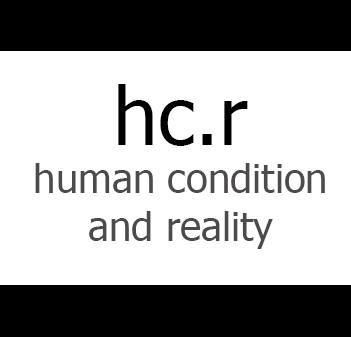
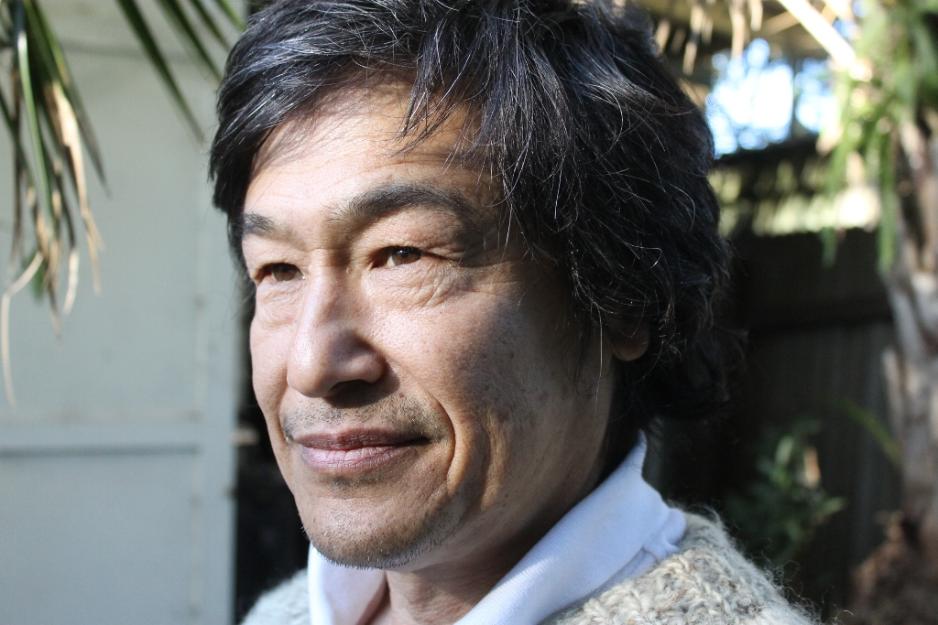
Copyright Takashi Tahcibana, 2014.
Takashi Tachibana - Artist of the Month August 2014
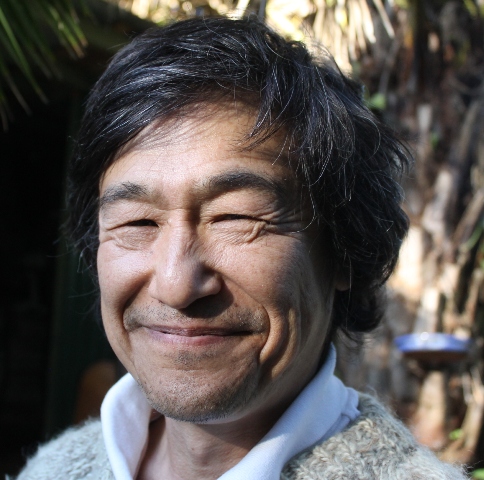 Some insights into Takachi's (Tash's) journey to here may be accessed in his Profile page. These images, which we consider to also be Art, developed as part of his practice as a Doctor.
Some insights into Takachi's (Tash's) journey to here may be accessed in his Profile page. These images, which we consider to also be Art, developed as part of his practice as a Doctor.
From his own words:
I remember when I was 14, thinking "I don't know what I want". I recognise now how, for the following decades, I had been searching for "What is there?". I pursued matters both within myself and without, but came to look more and more within.
I was lying on the bed when the children were still young, missing the mountains and the sea. I had a sense of the seasons entering the bedroom, and soon after realised that the whole body is what, or rather who is wilderness; he/she encompasses all that we experience including our sense of nature, the divine, one another as well as our isolation.
My pursuit for "What is there?" transformed to "Who is there to relate with".
I try to convey my understanding and approach to the human condition and reality, their relation and process, and include what is an expression that comes of this relation and process, in art and poetry.
I hope the works presented here resonates with you, and find bearing on your relation with your whole and reality.
About
Gendo refers to “the way” or dao. It is the process of reality. Gen is the original energy before yin and yang. Here it refers to the origin and source of the human condition and its process.
The whole body is in reality and we as self and our reality are projected by the whole body’s Central Nervous System. Our self and our reality must be distinguished from the whole body in reality. This is the basis of Gendo.
If Gendo is the process of reality, Orientation is the method for capturing the human condition and introducing reality. My hope is for humanity to be touched by reality and released from its isolating identification - the identity identified with what it experiences - by relating with a whole body who in reality is next to other whole beings, touched by the rest of creation, and who is spirited at core. Through a relation with our whole we are validated in our place as a projected acutuality and part of our whole, the whole self, whole being and whole body.
The human condition is captured as a projected actuality in space, and depicted and described in its relation with the whole body with images and words .
Art
You can "wear" these images.
Try them on. They mean to depict your projected actuality in relation with a whole body you belong to as a projected part.
Our projected actuality may be orientated in space, depicted, and related with the whole body. Wearing the depictions means capturing the components of our projected reality in space. Beyond our incessant and isolating determinings of what is in our reality, "what's what", try on the depictions for the "where" of our projected actuality.
They should then help you to relate with the whole body "who must be there", in reality.
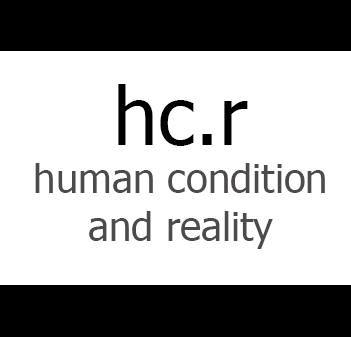
Website: www.gendohcr.com
Wordpress Blog: realityhc.files.wordpress.com
Facebook: www.facebook.com/Gendohcr
Mind body, the making of by tt4r - Published on 6 Aug 2014
Footage of the making of the "mind body" (sculpture). It is a depiction of the projected actuality of the human condition, created and placed by the whole self, made with thick copper wire. The music played in the background is original by the artist and the editor.
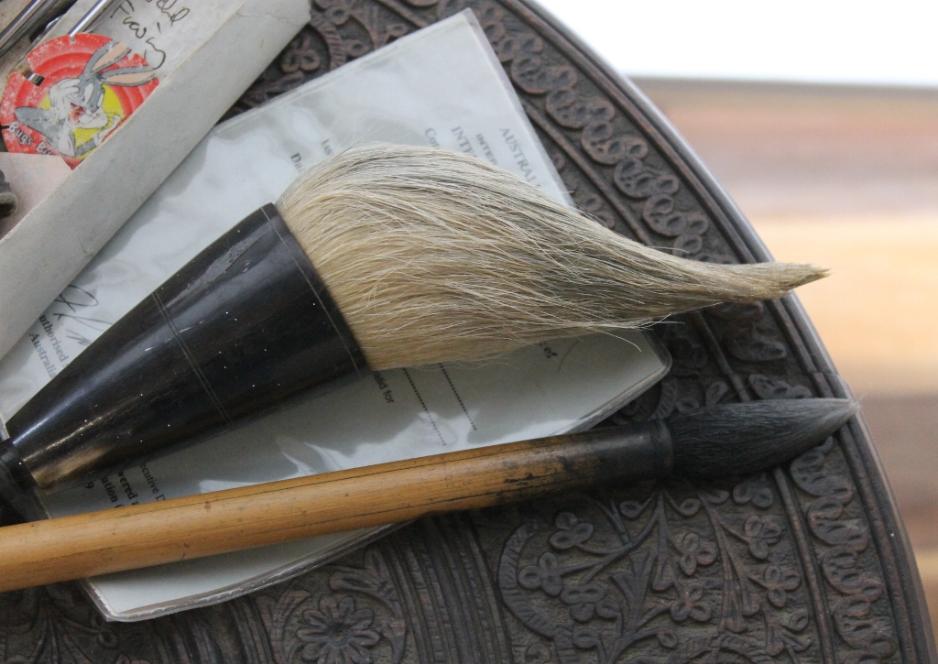
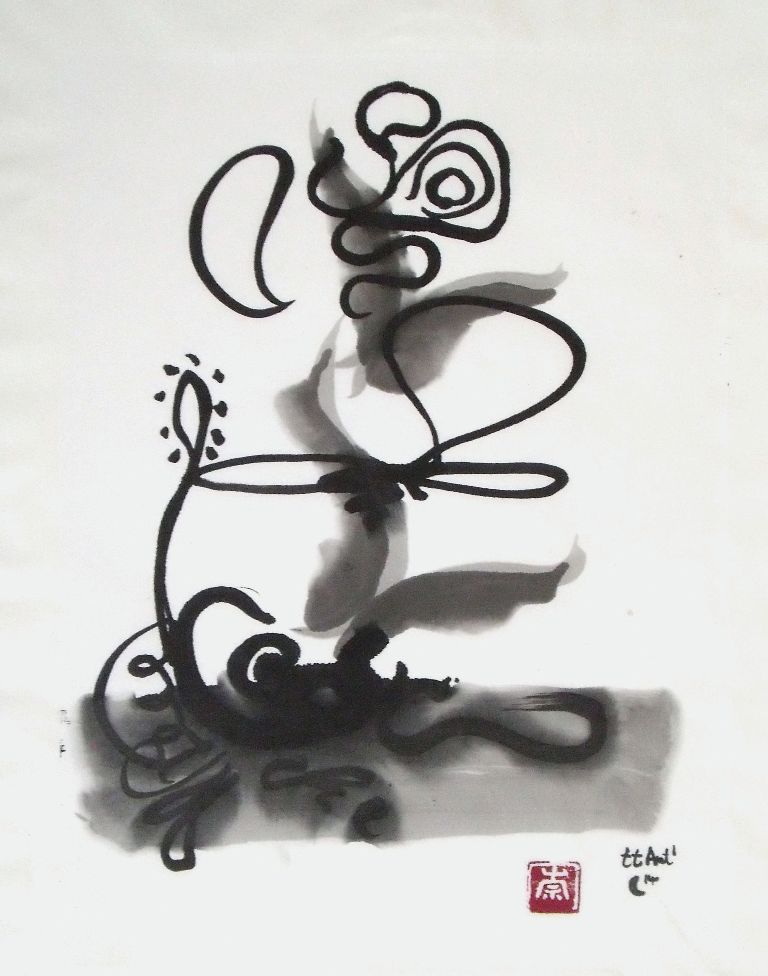
hc.r cornered settings to other side
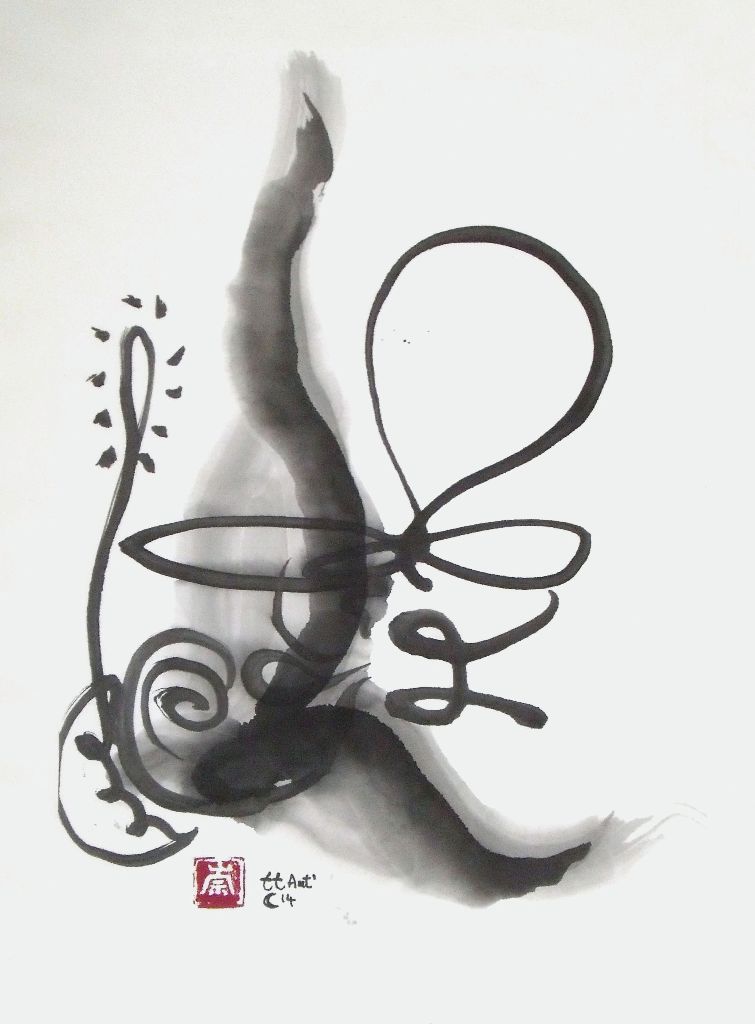
hc.r - cornered setting
hc.r - floating torso with underside, under belly and bottom landing
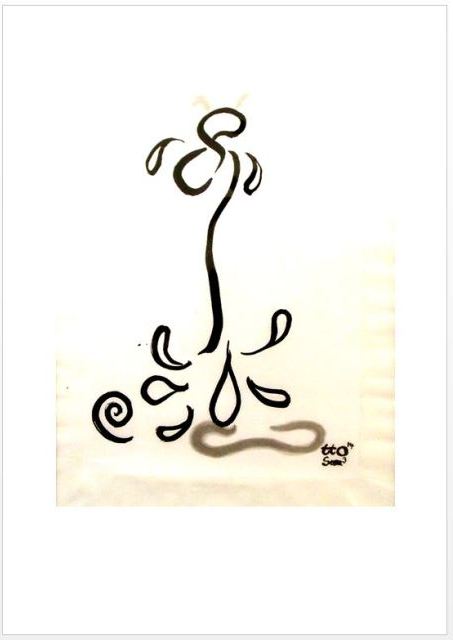
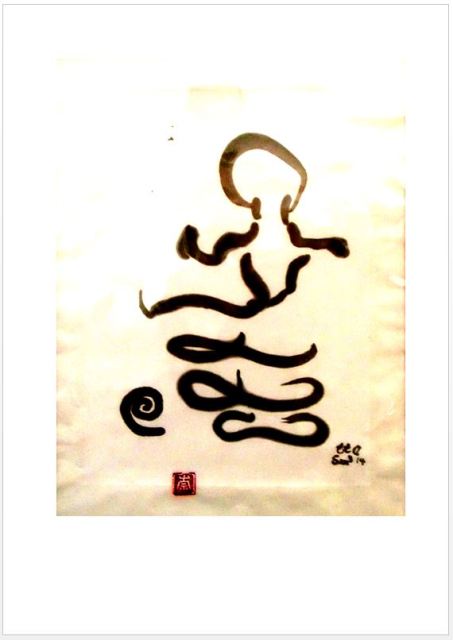
hc.r - floating torso with underside, under belly
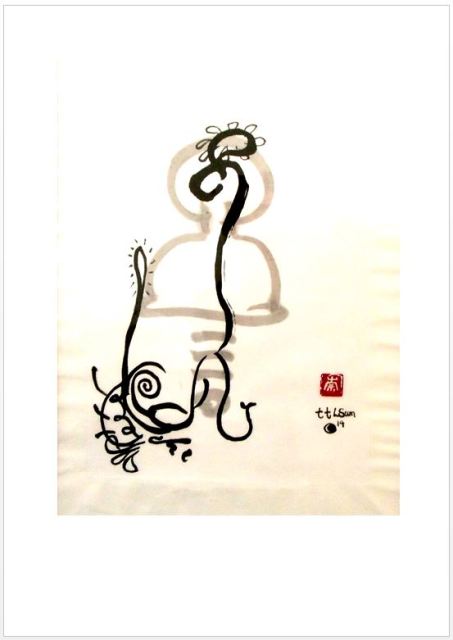
hc.r - and bottom landing
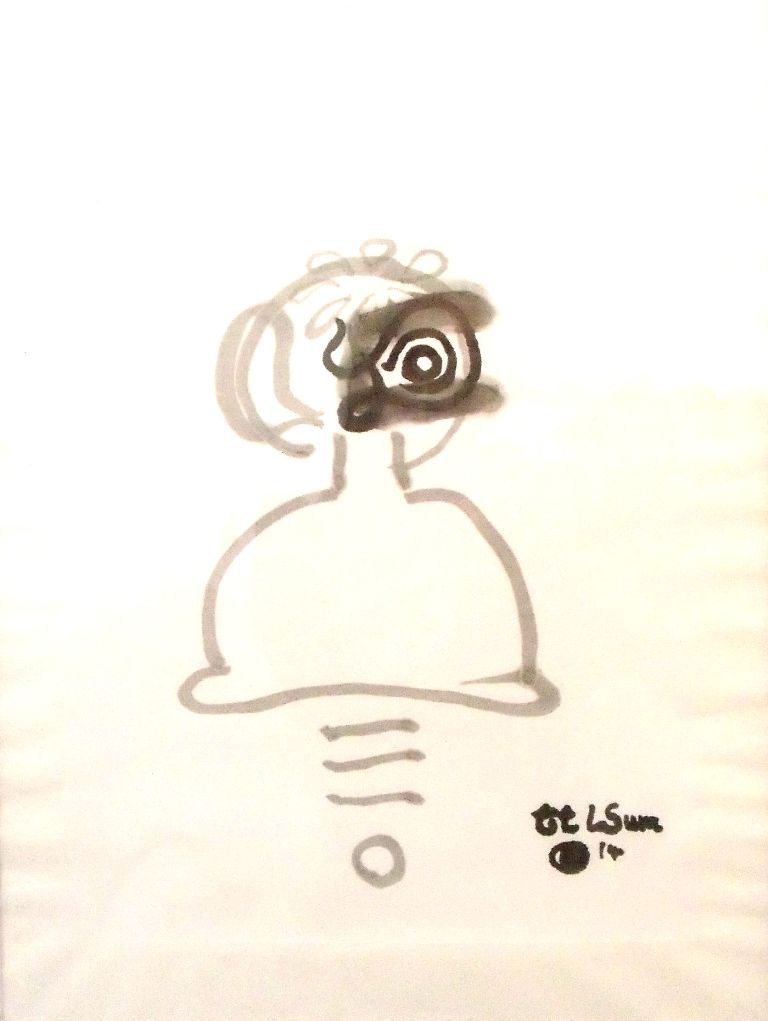
hc.r - mind's reach in ned kelly's letter box on whole body
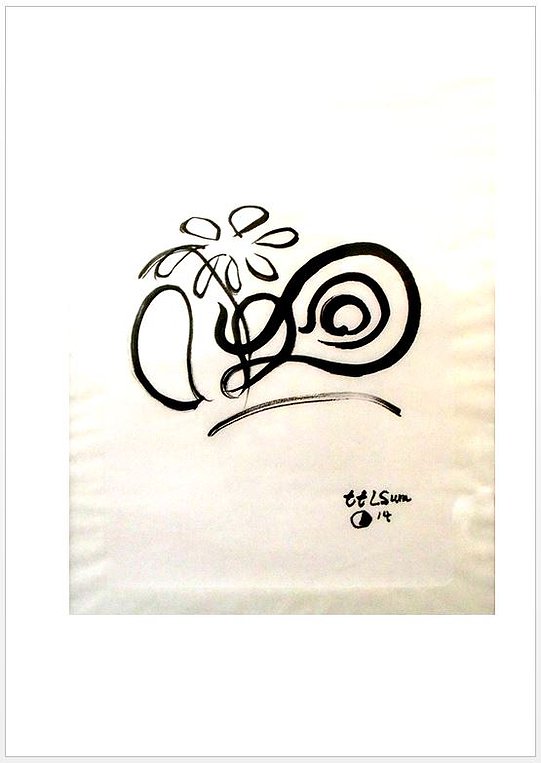
hc.r - minds reach cornered with it's displacement